We're celebrating the artisans, writers, makers, and more who make up the diverse and inspiring world of food.
Today: Nancy Harmon Jenkins shares a day in Tuscany with Supply Chain, from Tuscan Easter to trips to the local food market and cooking at Villa Campestri.
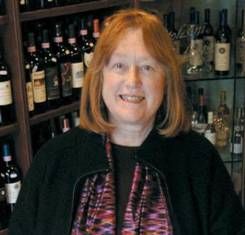 Nancy Harmon Jenkins is a leading authority on Mediterranean cuisine and the author of many books including The Mediterranean Diet Cookbook and Flavors of Tuscany. She leads food tours of Italy, Spain, and Tunisia for the Culinary Institute of America's Worlds of Flavor program, and will be the culinary guide for the 6-Day All-Inclusive Tuscan Retreat at Villa Campestri, a Renaissance estate perched on a hillside overlooking one of Tuscany's most scenic valleys. (Interested in going with a group of friends? Check out our Shop offer!)
Nancy Harmon Jenkins is a leading authority on Mediterranean cuisine and the author of many books including The Mediterranean Diet Cookbook and Flavors of Tuscany. She leads food tours of Italy, Spain, and Tunisia for the Culinary Institute of America's Worlds of Flavor program, and will be the culinary guide for the 6-Day All-Inclusive Tuscan Retreat at Villa Campestri, a Renaissance estate perched on a hillside overlooking one of Tuscany's most scenic valleys. (Interested in going with a group of friends? Check out our Shop offer!)
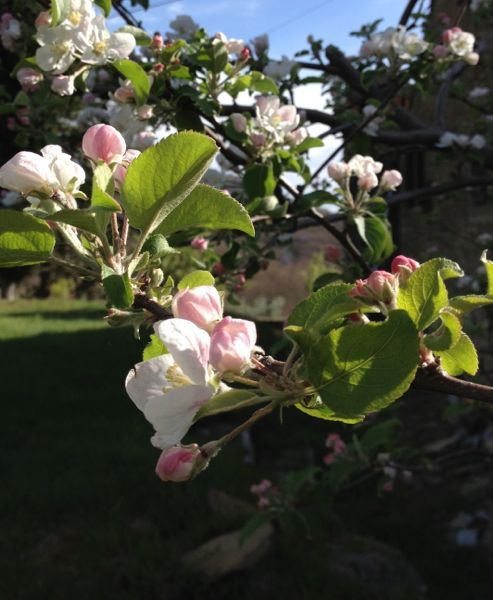
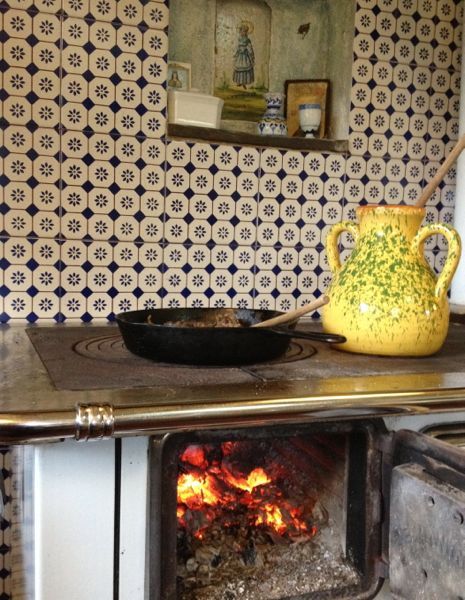
- Nancy
I got back to Tuscany just a week before Easter, my all-time favorite Mediterranean holiday. The apples are in blossom, the forsythia is flourishing, and still it's cold enough to want a fire in the woodstove. This is an old-fashioned stove I had brought down from the Alto Adige many years ago, and it's been a faithful in the kitchen ever since. It keeps us warm too -- and with a great bean soup or zuppa di fagioli bubbling away on top, ready for a dollop of our own olive oil when it's served.
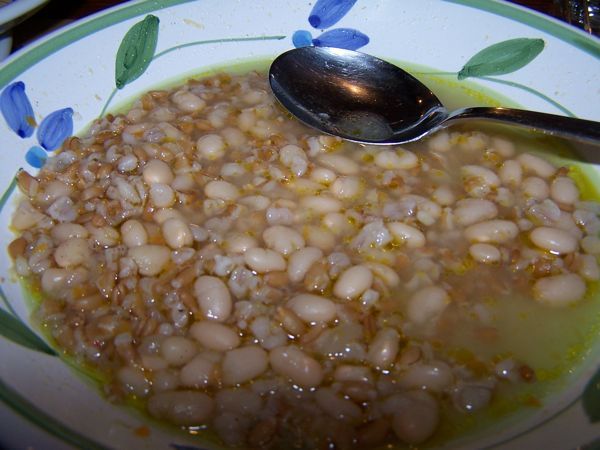 You can tell it's Easter by the kind of food that's around and about. My favorite pastry shop is Vannelli in Camucia, the market town on the plain below Cortona. Vanelli's windows are filled with Easter frivolities, chocolate eggs, meringues, almond cakes, and more. I stop here on Thursday mornings before the Camucia market for a cappuccino, a sweet corneto, and the newspapers, all taken at a sidewalk table from which I can watch the world pass by.
You can tell it's Easter by the kind of food that's around and about. My favorite pastry shop is Vannelli in Camucia, the market town on the plain below Cortona. Vanelli's windows are filled with Easter frivolities, chocolate eggs, meringues, almond cakes, and more. I stop here on Thursday mornings before the Camucia market for a cappuccino, a sweet corneto, and the newspapers, all taken at a sidewalk table from which I can watch the world pass by.
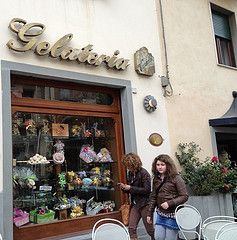
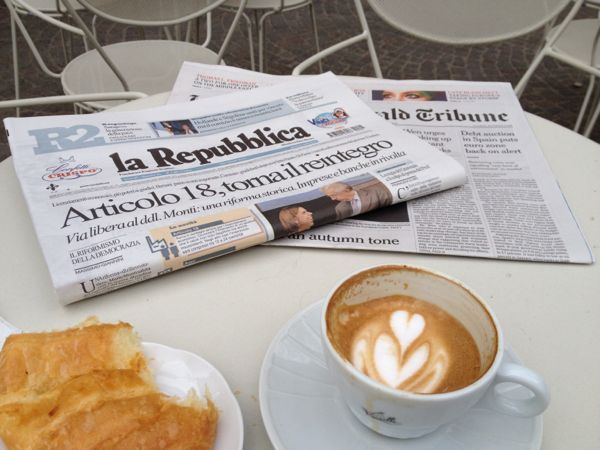
A lot of Easter favorites are a good deal more rustic than what's in Vanelli's windows -- this was on display in a roadside porchetta stand where Signora Quitti, the proprietor, says she herself makes the spicy ciaccia con ciccioli (flat bread with pork scraps) and torta al formaggio (ditto with chunks of pecorino cheese), using flour from a water-powered grist mill in the Casentino nearby. It was a toss-up whether the ciaccia was more delicious than the torta or vice versa.
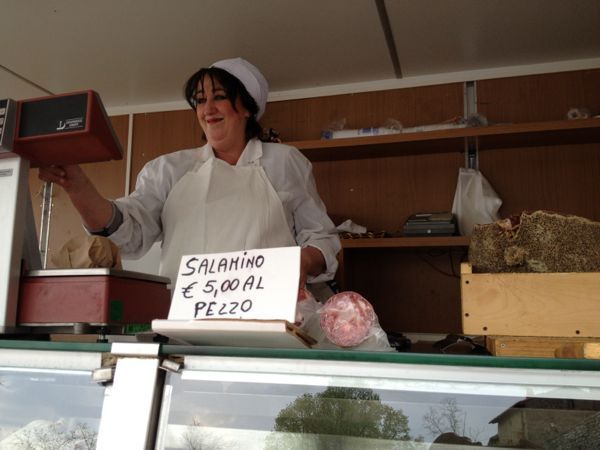
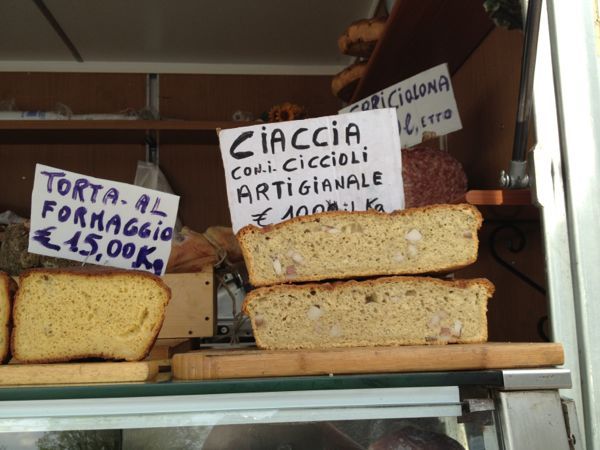
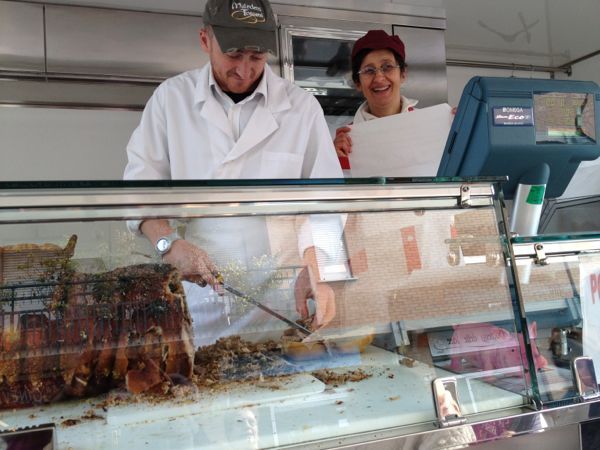
In Tuscany, a market just isn't a market without lots of porchetta -- that's a center cut of young pork stuffed with its own liver, lots of garlic, and plenty of wild fennel, then roasted in the wood-fired oven. To find the best, you just look for the one with the longest line of patient folks, then when it's your turn, ask for it con la crosta e poco grasso -- meaning with the crackling and just a little fat, please. Then this genial gentleman slices it generously to fill a panino, which is a sandwich on a crisp bun and not what you probably think it is.

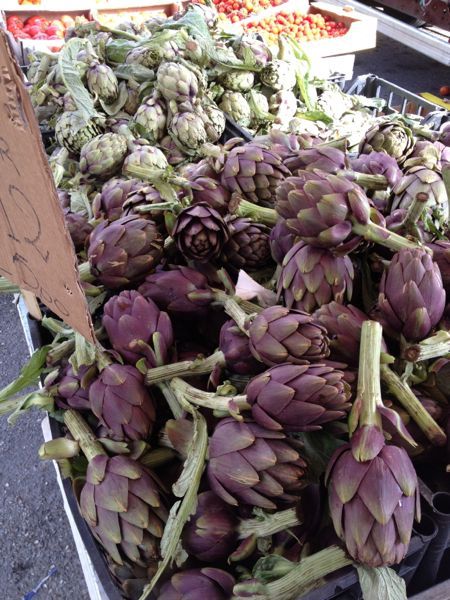
So what else is in the market these spring days? I found artichokes -- just look at the price and weep! Ten for 5 euros -- that's ten beautiful, fresh, crisp artichokes for about $6.50, and moreover these beauties come without spines in the center. Chop them up for a risotto or fry them till they're crisp, but I like them best sliced raw and served as part of a pinzimonio, an array of raw vegetables with nothing but salt, pepper, and the finest extra-virgin olive oil.
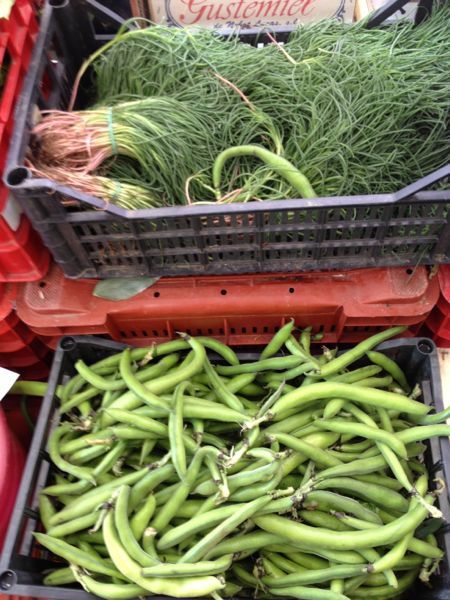
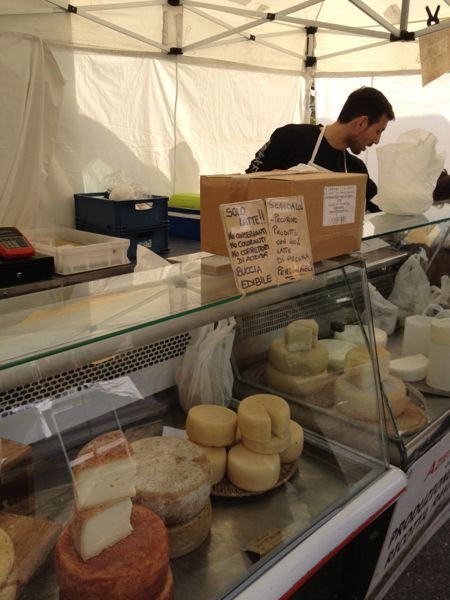
Another spring beauty in the market: agretti. I've only ever seen this mysterious vegetable in Italy and at Chase's Daily in Belfast, Maine, though I'm told it's appearing in California farmers' markets. It's a little bit salty, a little bit tart, looks like a cross between very skinny green beans and very fat chives, and is enormously tasty when lightly steamed and dressed with olive oil and lemon juice. Much more familiar are fava beans, called bacelliand in Tuscany, served whole in the pod and raw, with a wedge of soft semi-aged Pecorino from the sheep grazing in green Tuscan meadows. You husk the beans and pop them in your mouth, take a bite of cheese, a sip of wine, and there you are -- happiness! Cacio e bacelli we call the combination, and please don't peel the individual beans -- if you have to do that the beans are too old and should be turned into a puree.
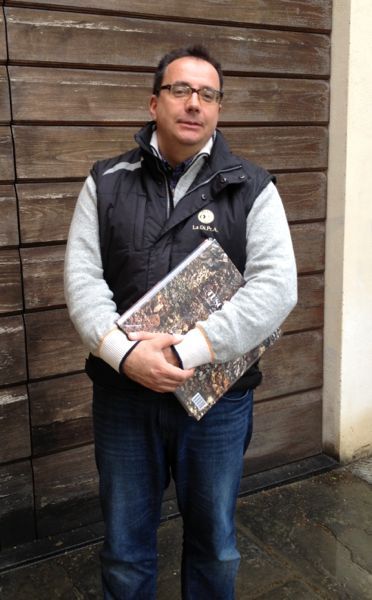
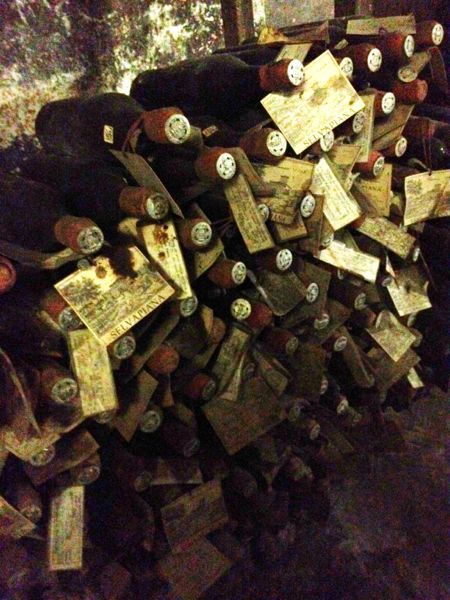
I'm developing a very focussed Tuscan kitchen intensive at Villa Campestri toward the end of May, so I check in from time to time to see what's going on in the Mugello valley north of Florence. This is Federico Giuntini, who makes his award-winning DOCG Chianti Rufina wines at Selvapiana -- not all of them as old as these in the cantina vecchia, the old cantina under the winery. (They're on the list at my daughter's restaurant in New York -- and on many other top wine lists too). We'll be doing a wine-tasting and lunch at Selvapiana in May.
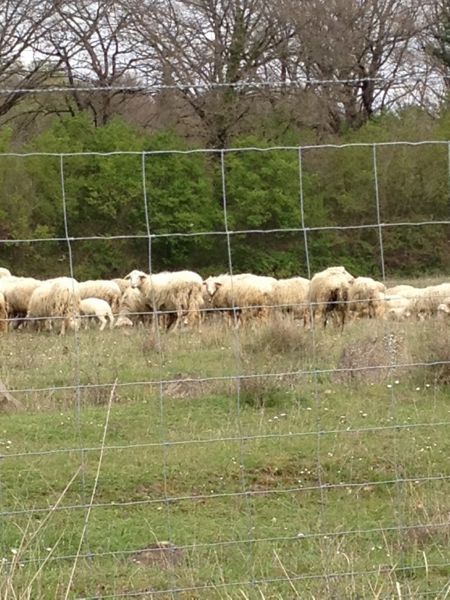
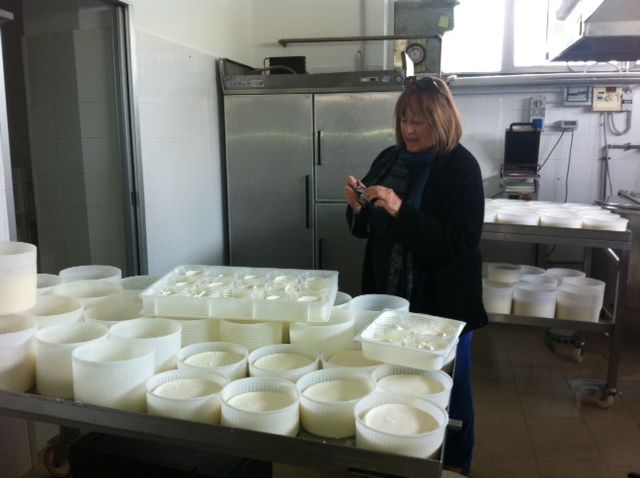
We'll also be tasting cheeses made from the milk of Sarda sheep like these. I tried to get a picture of Sandra Mongili's great cheeses but someone else took a picture of me! These are not just made from raw milk, they're also certified organic -- we'll have them fresh, semi-aged, and fully aged, and also taste real honest-to-god ricotta, freshly made, and not what we so often get in the U.S. which is nothing but curdled milk.
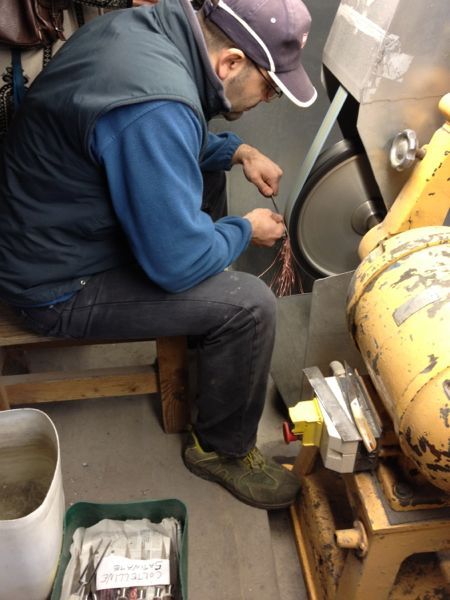
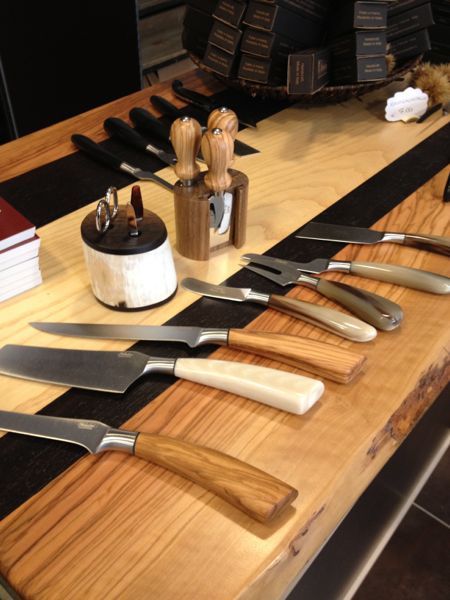
One other hit on our tour is the Saladini knife factory in nearby Scarperia, where artisans like Giacomo hand-forge knives -- do you see the sparks falling as he hones this beautiful blade? They make exquisite kitchen and table knives (also hunting knives, by the way, and a great little knife for peeling chestnuts). All are for sale in their showroom.
 And here's Paolo Pasquali, owner of Villa Campestri, telling me how they recovered from the coldest, snowiest winter in memory. Now in spring, the Villa is back in shape and the olives are flourishing -- they'll have tiny new olives by the time we arrive in May.
And here's Paolo Pasquali, owner of Villa Campestri, telling me how they recovered from the coldest, snowiest winter in memory. Now in spring, the Villa is back in shape and the olives are flourishing -- they'll have tiny new olives by the time we arrive in May.
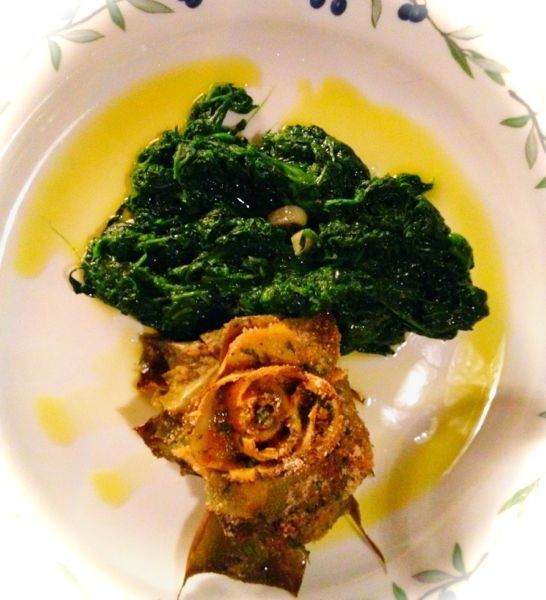 The restaurant, naturally, specializes in olive oil cuisine -- not just cooking, but actually matching the varied flavors of individual oils with different dishes to bring out the best in both. In this little vegetable combination, chef Jerry Zanieri used Campestri's own olio di Cosimo, an assertive Tuscan oil, to tame the acerbic spinach. The artichoke was roasted with a lemony San Cassiano oil from up above Verona in the extreme north of Italy, and garnished with a soft picual from Castillo di Canena in Andalucia. It all goes to illustrate that there are so many uses wise cooks can make of this gamut of olive oils -- enhancing flavors, taming flavors, melding flavors.
The restaurant, naturally, specializes in olive oil cuisine -- not just cooking, but actually matching the varied flavors of individual oils with different dishes to bring out the best in both. In this little vegetable combination, chef Jerry Zanieri used Campestri's own olio di Cosimo, an assertive Tuscan oil, to tame the acerbic spinach. The artichoke was roasted with a lemony San Cassiano oil from up above Verona in the extreme north of Italy, and garnished with a soft picual from Castillo di Canena in Andalucia. It all goes to illustrate that there are so many uses wise cooks can make of this gamut of olive oils -- enhancing flavors, taming flavors, melding flavors.
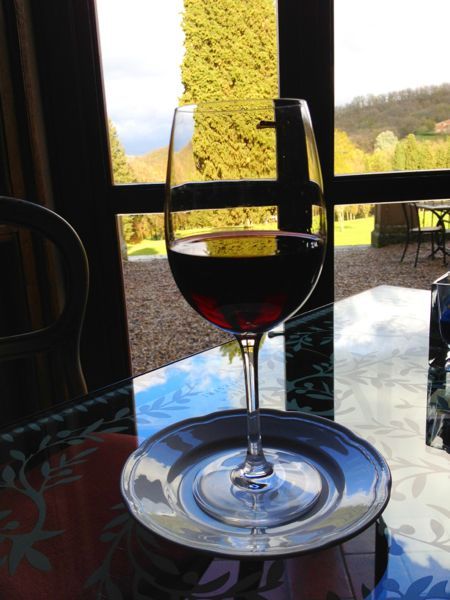 Finally, this is for Christina who wanted a beautiful glass of wine, a glass of Giuntini's Chianti Rufina Selvapiana -- a great way to end a long day, looking out over the rain-splashed terrace of Campestri to the spring green of the Mugello beyond.
Finally, this is for Christina who wanted a beautiful glass of wine, a glass of Giuntini's Chianti Rufina Selvapiana -- a great way to end a long day, looking out over the rain-splashed terrace of Campestri to the spring green of the Mugello beyond.
Sound like fun? Check out our Shop offer to join Nancy for the activities that she lists and more to boot on a spring weekend at Villa Campestri in Tuscany.
 Nancy Harmon Jenkins is a leading authority on Mediterranean cuisine and the author of many books including
Nancy Harmon Jenkins is a leading authority on Mediterranean cuisine and the author of many books including 

 You can tell it's Easter by the kind of food that's around and about. My favorite pastry shop is Vannelli in Camucia, the market town on the plain below Cortona. Vanelli's windows are filled with Easter frivolities, chocolate eggs, meringues, almond cakes, and more. I stop here on Thursday mornings before the Camucia market for a cappuccino, a sweet corneto, and the newspapers, all taken at a sidewalk table from which I can watch the world pass by.
You can tell it's Easter by the kind of food that's around and about. My favorite pastry shop is Vannelli in Camucia, the market town on the plain below Cortona. Vanelli's windows are filled with Easter frivolities, chocolate eggs, meringues, almond cakes, and more. I stop here on Thursday mornings before the Camucia market for a cappuccino, a sweet corneto, and the newspapers, all taken at a sidewalk table from which I can watch the world pass by.














 And here's Paolo Pasquali, owner of
And here's Paolo Pasquali, owner of  The restaurant, naturally, specializes in olive oil cuisine -- not just cooking, but actually matching the varied flavors of individual oils with different dishes to bring out the best in both. In this little vegetable combination, chef Jerry Zanieri used Campestri's own olio di Cosimo, an assertive Tuscan oil, to tame the acerbic spinach. The artichoke was roasted with a lemony San Cassiano oil from up above Verona in the extreme north of Italy, and garnished with a soft picual from Castillo di Canena in Andalucia. It all goes to illustrate that there are so many uses wise cooks can make of this gamut of olive oils -- enhancing flavors, taming flavors, melding flavors.
The restaurant, naturally, specializes in olive oil cuisine -- not just cooking, but actually matching the varied flavors of individual oils with different dishes to bring out the best in both. In this little vegetable combination, chef Jerry Zanieri used Campestri's own olio di Cosimo, an assertive Tuscan oil, to tame the acerbic spinach. The artichoke was roasted with a lemony San Cassiano oil from up above Verona in the extreme north of Italy, and garnished with a soft picual from Castillo di Canena in Andalucia. It all goes to illustrate that there are so many uses wise cooks can make of this gamut of olive oils -- enhancing flavors, taming flavors, melding flavors. Finally, this is for Christina who wanted a beautiful glass of wine, a glass of Giuntini's Chianti Rufina Selvapiana -- a great way to end a long day, looking out over the rain-splashed terrace of Campestri to the spring green of the Mugello beyond.
Finally, this is for Christina who wanted a beautiful glass of wine, a glass of Giuntini's Chianti Rufina Selvapiana -- a great way to end a long day, looking out over the rain-splashed terrace of Campestri to the spring green of the Mugello beyond.
See what other Food52 readers are saying.